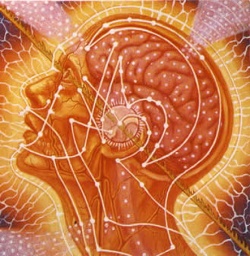The Open Expanse of Space: A Commentary on the Meaning of Milarepa’s Eight Kinds of Mastery Explained by Khenpo Tsültrim Gyamtso Rinpoche
Student Question: One night during a month-long meditation retreat, I awoke suddenly and experienced a powerful sensation of fear, both physically and mentally. At the same time that I knew I was afraid, I did not know what I was afraid of. I had not been thinking of the past or the future. Nevertheless, this feeling of fear lasted for about five days. Another time, more recently, I had the experience of intense mental pain, not attached to any particular incident and not resulting from any particular series of thoughts. So I wonder, is it just that my thoughts are too subtle for me to be aware of them, or how else should I understand those experiences?
Khenpo Tsultrim Gyamtso Rinpoche response: Your experiences prove that fear and suffering have no ground and no root; no actual basis or origin. For as you say, their causes are unidentifiable. If they truly existed, they would have to have a truly existent, identifiable origin, but they do not. Therefore, the stages of bondage and liberation with regard to strong emotions do not truly exist either.
One explanation for why we experience sudden emotions is that we have the habitual tendencies to do so. For example, if you get frightened easily, it is because you have in your mind a strong habit to become frightened. However, this is just a superficial explanation, because where is that habitual tendency, actually? When you examine for it, you cannot find it. So you can assign a causal significance to the habitual tendency, but the habitual tendency itself you cannot find, and thus, you are right back at groundlessness and rootlessness.
It is like when scientists try to analyze the tiniest particles out of which everything else is made, they find that they cannot pinpoint the particles’ specific location. When the scientists look in one place, then all of a sudden the particle they are looking for is not there—it has moved somewhere else. When they look in that second place, the particle has again moved somewhere else. This shows that phenomena are ultimately groundless and rootless. As Milarepa sings in No Birth, No Base, and Union,
That you are able to become frightened so easily is a sign that you have experience. If you did not have experience, you would not know how to be frightened. You are experienced in being frightened. But there is no problem with that, because when you try to find that experience, you cannot. Whatever you posit as your experience’s cause, if you investigate it, you end up in the same place, groundlessness and rootlessness. This is also called “self-arisen and self-liberated”— the fear is self-arisen and self-liberated because you cannot find any cause for it; any truly existent reason for why it should appear. All you can say about it is that it is self-arisen and self-liberated. The way that Jamgön Kongtrül Lodrö Thaye explains it in his Song of Mahamudra is:
This is similar to the view that you have in a lucid dream—appearances are self-arisen and self-liberated. You may dream of being bound by iron chains and then set free: When you do not know you are dreaming, the bondage and liberation seem to be real. But when you know you are dreaming, you know that the bondage and liberation are dependently arisen mere appearances, and that the true nature of the dream transcends bondage and liberation. This is bondage and liberation self-arisen and self-liberated.
Khenpo Tsultrim Gyamtso Rinpoche gave the teaching that served as the basis for this article on October 22, 2005, at the Boston Shambhala Center, Boston, Massachusetts. ©2007 Khenpo Tsultrim Gyamtso Rinpoche. These teachings were orally translated and this article edited by Ari Goldfield.

